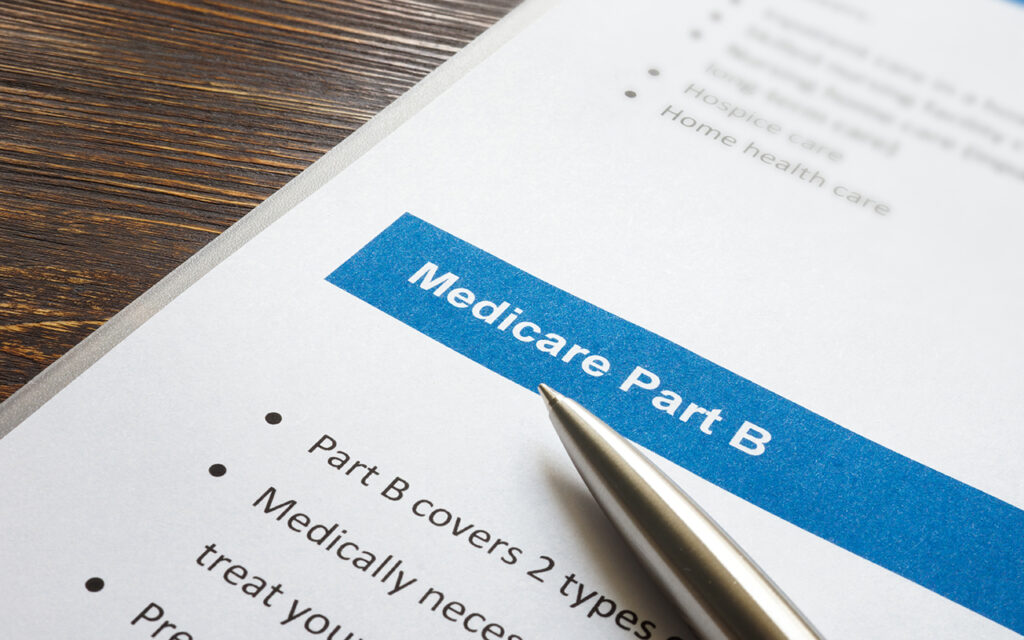For the millions of Americans who depend on Medicare for their healthcare coverage, 2025 brings a significant development: an increase in the standard monthly Medicare Part B premium. While a $10.30 jump may not sound extreme on its own, for retirees living on fixed incomes or carefully balancing their household budgets, this increase is cause for concern—especially as it comes during a year when the Social Security cost-of-living adjustment (COLA) is rising by just 2.5%, one of the smallest increases in years.
Understanding what’s behind this change—and, more importantly, what you can do about it—can help you navigate the coming year with confidence and possibly avoid the financial sting altogether.
What’s Causing the Premium Hike?

The Centers for Medicare & Medicaid Services (CMS) announced that the standard monthly premium for Medicare Part B will increase from $174.70 in 2024 to $185.00 in 2025. This represents a 5.9% increase, far outpacing the year’s modest Social Security COLA. The annual Part B deductible will also rise from $240 to $257.
According to CMS, the rise in premiums is driven by multiple factors, including increased utilization of healthcare services among beneficiaries, inflation in medical costs, and the projected expenses tied to new and increasingly popular outpatient treatments—particularly high-cost injectable drugs that fall under Part B coverage.
Part B, which covers physician services, outpatient hospital care, preventive services, and some home health care, is a critical component of Original Medicare. Unlike Part A, which is typically premium-free for most enrollees, Part B always comes with a monthly cost, and the annual adjustments to that cost can significantly impact seniors on tight budgets.
How the Increase Stacks Up Against Social Security Gains

The Social Security Administration has announced a 2.5% COLA for 2025, which translates to an average benefit increase of about $49 per month for retired workers. However, with the Medicare Part B premium going up by $10.30, more than 20% of that COLA could be immediately absorbed by healthcare costs.
For those on the lower end of the Social Security benefits scale, the impact is more dramatic. Consider someone receiving $1,500 per month in benefits—their COLA increase will be roughly $37.50, of which $10.30 will go to the Medicare premium increase, leaving only about $27 in actual additional take-home income.
This dynamic is especially concerning in a year when inflation remains elevated for essentials like food and housing. The increase in Part B premiums underscores why many retirees feel like they’re running just to stay in place, financially speaking.
Who Pays Even More: The IRMAA Factor

While the standard Part B premium is $185.00 for most enrollees, around 8% of Medicare beneficiaries pay higher premiums based on their income. Known as the Income-Related Monthly Adjustment Amount (IRMAA), this surcharge applies to individuals with modified adjusted gross incomes (MAGI) above $106,000 or couples earning more than $212,000, based on tax returns from two years prior.
In 2025, the highest-income bracket could see monthly Part B premiums of $628.50 or more. That’s over $7,500 a year per person, a steep price to pay for outpatient coverage, even for wealthier retirees.
However, IRMAA isn’t always set in stone. If your income has dropped since 2023 due to retirement, divorce, or another major life event, you can file an appeal using Social Security Form SSA-44 to request a lower premium tier. Many retirees aren’t aware of this option and end up overpaying unnecessarily.
The Hold Harmless Provision: Will It Protect You?

One bit of good news is the “hold harmless” provision, which protects many Social Security recipients from seeing their net benefit decrease due to rising Medicare premiums. Under this rule, if your Part B premium is automatically deducted from your Social Security payment, and you’re not subject to IRMAA, your increase in premiums cannot exceed the dollar amount of your COLA increase.
In practice, this means that if your Social Security check is modest and your COLA increase is small, you may not pay the full $10.30 premium hike. Instead, your premium would be adjusted upward only to the extent your Social Security payment also increases.
However, not all beneficiaries are eligible for this protection. If you pay your premiums directly (not through automatic deduction), are enrolled in Medicaid, or fall into an IRMAA bracket, you may not be covered by hold harmless provisions. It’s a helpful buffer, but not a blanket solution.
Can Medicare Advantage Plans Offset the Increase?

One of the more creative ways to offset the 2025 Part B premium increase is by switching to a Medicare Advantage plan that offers a Part B premium reduction, often called a “giveback” benefit. Offered by private insurance companies approved by Medicare, these plans essentially reimburse a portion of your Part B premium directly to your Social Security check.
In 2025, some plans will offer givebacks of up to $150 per month, though amounts vary widely depending on location and provider. These plans are typically available in urban and suburban areas with competitive insurance markets.
Before switching, it’s important to compare plan details carefully. Medicare Advantage plans often have different networks, prior authorization requirements, and coverage restrictions compared to Original Medicare. That said, if you’re in good health and willing to accept some trade-offs, a giveback plan could not only neutralize the $10.30 increase—it might leave you with more money in your pocket.
Don’t Overlook the Medicare Savings Programs

If you’re living on a limited income, you may qualify for a Medicare Savings Program (MSP), which can cover all or part of your Medicare Part B premiums. These programs are federally funded but administered by each state, and they come with varying income and asset limits.
In 2025, the Qualified Medicare Beneficiary (QMB) program remains the most generous, covering premiums, deductibles, and coinsurance for individuals with incomes up to 100% of the federal poverty level. Even the Specified Low-Income Medicare Beneficiary (SLMB) program can help with premium payments if your income is slightly above those limits.
Thousands of eligible seniors never apply for MSPs, either because they don’t know they exist or because the application process can be confusing. You can get help by contacting your state’s State Health Insurance Assistance Program (SHIP) or visiting Medicare.gov for more information.
Use Open Enrollment to Reevaluate Your Coverage

Every year from October 15 to December 7, Medicare’s Open Enrollment period gives you the chance to switch plans, join a Medicare Advantage plan, or add or drop Part D drug coverage. This is also the time to review your options for dealing with the upcoming Part B premium increase.
If you’re not satisfied with your current coverage, or if you’re looking to take advantage of lower premiums or better benefits, this is your window to act. The right changes can mean hundreds or even thousands of dollars in savings over the next year.
Final Thoughts: Control What You Can

The $10.30 increase in Medicare Part B premiums may seem like just another in a series of frustrating financial hits for retirees, but it doesn’t have to upend your retirement plan. By understanding the mechanisms behind the increase and taking advantage of programs, plan options, and appeals processes, you can take back some control over your healthcare costs.
Medicare is a complex system, and changes like this one often come with ripple effects. Staying informed, reviewing your options annually, and seeking assistance when needed can help you minimize the impact and even find new ways to improve your coverage.
Healthcare costs are likely to continue rising—but with the right knowledge and tools, your bills don’t have to rise with them.